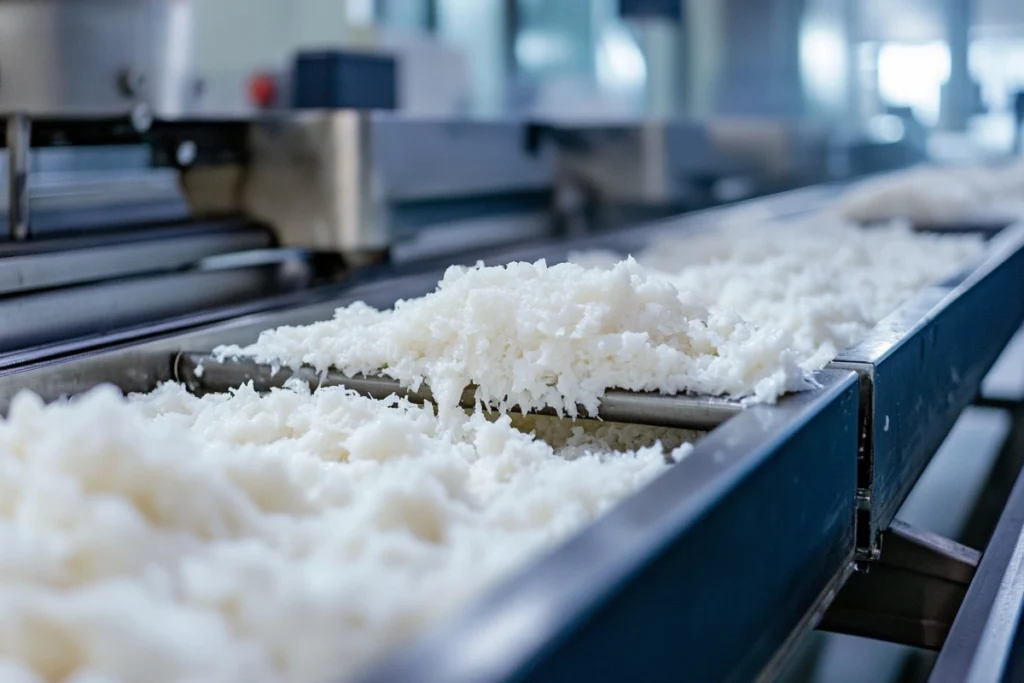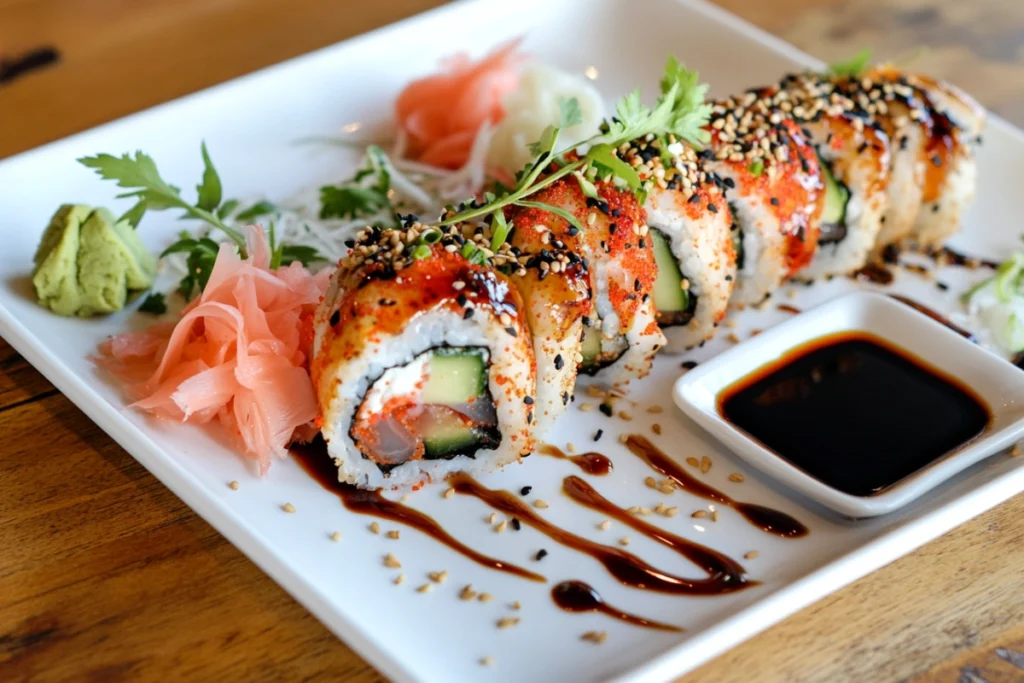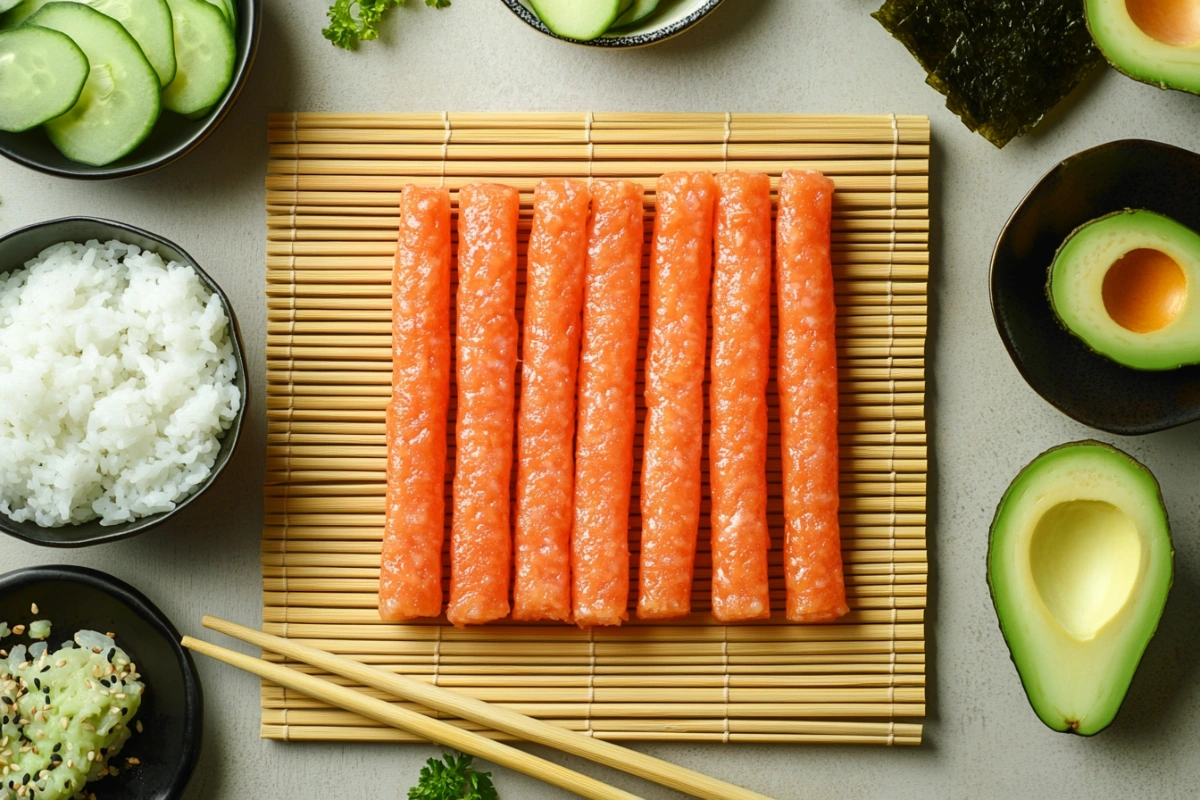The culinary world has a knack for blending tradition with innovation, and few examples showcase this as well as Kanikama. This seafood staple, also known as imitation crab, has found its way into everything from sushi rolls to salads. But what exactly is Kanikama, and why has it gained such global popularity? This article dives deep into its origins, how it’s made, its health benefits, and its role in sustainability. Whether you’re a foodie or a curious eater, there’s much to learn about this fascinating ingredient. Let’s begin by understanding the basics.
What is Kanikama?
Origins and Meaning of Kanikama
Kanikama, a Japanese invention, derives its name from a blend of two words: kani (meaning crab) and kamaboko (fish cake). Despite its crab-like appearance and taste, Kanikama is made from surimi, a processed fish paste that’s skillfully flavored and shaped to mimic real crab meat. This product is a culinary marvel, offering the essence of crab without using the actual crustacean.
In Japan, Kanikama is celebrated as an affordable and versatile seafood substitute. Internationally, it’s often marketed under names like crab sticks, sea legs, or simply imitation crab. But while the name might change, the essence of Kanikama remains the same: a cleverly crafted, crab-inspired food.
How It Differs from Real Crab
While real crab meat comes straight from crustaceans, Kanikama follows a different process. Manufacturers start with Alaska pollock or another white fish, mincing it finely. They mix the fish with binders like egg whites and add natural or artificial crab flavoring. To create the appearance of crab legs, they apply a reddish food coloring, completing the illusion. This method offers a cost-effective and versatile alternative to real crab.
Unlike fresh crab, which has a delicate texture and a briny, oceanic flavor, Kanikama offers a mild, slightly sweet taste. It’s less expensive and has a longer shelf life, making it an accessible alternative for seafood lovers worldwide.
The History of Kanikama
Development in Japan
Kanikama emerged as a revolutionary product in Japan during the 1970s. The journey began with the Japanese company Sugiyo, which patented imitation crab flesh in 1974. Originally created as a flaked version, this invention aimed to provide an affordable alternative to real crab meat. A year later, Osaki Suisan introduced the iconic crab stick form, solidifying Kanikama’s place in Japanese cuisine.
From the start, Kanikama captured attention for its ingenuity. Its creators skillfully combined traditional food preservation techniques with modern technology, using surimi (processed fish paste) as the foundation. This innovation not only addressed economic constraints but also catered to the growing demand for seafood during that era.
Global Spread and Naming Variations
In 1977, Kanikama crossed international borders, thanks to a collaboration between Sugiyo and The Berelson Company in the United States. As it gained traction worldwide, the product adopted various names, including imitation crab sticks, sea legs, and even krab. Legal restrictions in some countries prohibited marketing it as “crab sticks,” further driving these creative naming conventions.
Kanikama’s global popularity can be attributed to its versatility and affordability. It became a staple in sushi rolls, salads, and hot dishes, making it accessible to diverse culinary cultures. Its universal appeal highlights its role as a practical yet flavorful seafood substitute.
How Kanikama is Made

Key Ingredients
At the heart of Kanikama lies surimi, a finely processed paste made from white fish, most commonly Alaska pollock. This fish is highly valued for its mild flavor and firm texture, both of which make it an ideal choice for creating imitation seafood. To enhance the paste, manufacturers typically incorporate binders like egg whites and starch, along with natural or artificial flavorings. These additions help achieve the perfect texture while maintaining affordability.
Producers craft the iconic crab flavor of Kanikama by blending precise seasonings with crab extract. To lower production costs, some manufacturers use artificial flavoring instead of natural extracts. They enhance the visual appeal by applying a layer of red or orange food coloring, which mimics the look of cooked crab legs and completes the illusion of authenticity. This careful attention to both flavor and appearance ensures Kanikama remains a convincing and appealing seafood alternative.
The Manufacturing Process
Creating Kanikama involves a detailed process aimed at replicating the taste and texture of real crab. Producers begin by thoroughly deboning the fish and grinding it into a smooth paste, which ensures consistent texture throughout. They then mix the surimi with seasonings, starch, and flavor enhancers, creating a pliable, dough-like consistency suitable for shaping.
Next, they mold the mixture into sticks or other forms, relying on specially designed molds to achieve the desired appearance. After shaping, the product undergoes steaming to set its texture, followed by cooling to maintain its freshness. Finally, producers wrap and package the Kanikama with care, completing an efficient production method that guarantees uniform quality and a longer shelf life. This streamlined process ensures the product remains affordable and accessible while retaining its appeal.
This detailed process not only ensures a high-quality product but also maintains the affordability and convenience that make Kanikama a staple in kitchens around the world.
Enhancements and Flavoring Techniques
Modern Kanikama producers continue to innovate by introducing variations with enhanced flavors and textures. Some premium versions include real crab meat for an authentic taste, while others incorporate seasonings like wasabi or chili to cater to evolving consumer preferences.
This blend of creativity and tradition has solidified Kanikama as a versatile ingredient in global cuisines. From sushi to soups, it offers an affordable yet delicious way to enjoy the essence of seafood.
Kanikama in Culinary Uses
Popular Dishes Featuring Kanikama
Kanikama has made its way into kitchens worldwide, offering a versatile flavor and texture that enhances countless dishes. For instance, in Japanese cuisine, it serves as a staple ingredient in sushi, particularly the classic California roll. The slightly sweet and flaky texture of Kanikama pairs perfectly with rice and seaweed, making it a favorite among sushi enthusiasts. Moreover, it provides a convenient alternative to real crab without compromising taste.
Beyond sushi, Kanikama frequently appears in seafood salads, where its mild and savory flavor complements crisp greens, creamy dressings, and other seafood. In soups, it mimics the delicate taste of fresh crab, adding depth to the dish without the hassle of shelling actual crab meat.
Additionally, in some regions, Kanikama is fried in tempura batter or wrapped in rice paper for a quick and flavorful snack. Its adaptability allows it to seamlessly blend into almost any recipe that calls for seafood, making it a versatile choice for home cooks and chefs alike.
For those looking to experiment, why not try dishes like crab brulée? This unique recipe offers an innovative twist on traditional seafood-inspired cuisine, showcasing just how creative you can get with Kanikama.

Creative Modern Recipes
As tastes evolve, so do the ways Kanikama is used in recipes. Home cooks and professional chefs alike are incorporating it into unexpected dishes. For instance, kanikama-stuffed pasta shells or imitation crab tacos showcase its versatility in global cuisine.
Another inventive recipe is kanikama dip, a creamy, flavorful spread perfect for crackers or veggie sticks. By blending Kanikama with cream cheese, herbs, and spices, you can create a party-ready appetizer in minutes. Additionally, its ability to hold flavor makes it ideal for spicy dishes like kanikama curry.
For a modern seafood twist, check out recipes for snow crab legs and compare their preparation styles to those using imitation crab. Such comparisons highlight Kanikama’s strengths as a convenient, affordable alternative.
Health Aspects of Kanikama
Nutritional Profile
Kanikama offers a surprisingly balanced nutritional profile for a processed food. Low in fat and calories, it’s a popular choice for those seeking a healthier alternative to traditional seafood. A typical serving is packed with protein, making it a great option for individuals aiming to boost their protein intake.
However, it’s important to note that Kanikama contains fillers like starch and egg whites, which may impact its nutritional density. Additionally, some versions use artificial flavorings and preservatives, so reading labels is key to making informed choices.
Nutritional Content (Per 100g)
| Nutrient | Amount |
|---|---|
| Calories | 95 kcal |
| Protein | 7 g |
| Fat | 0.5 g |
| Carbohydrates | 15 g |
| Sodium | 700 mg |
| Cholesterol | 20 mg |
Is Kanikama a Healthy Choice?
The answer largely depends on your dietary goals. If you’re looking for a low-cost, high-protein substitute for crab, Kanikama can be a convenient option. Its lower calorie content and lack of saturated fat make it a good fit for calorie-conscious eaters.
That said, the sodium levels in some Kanikama products may be high, which is something to watch for if you’re managing salt intake. Opting for higher-quality versions with fewer additives can significantly improve the health benefits of this seafood alternative.
Sustainability and Ethical Considerations
Environmental Impact of Surimi Production
Kanikama is primarily made from surimi, a finely processed fish paste that has its own set of environmental implications. Surimi production relies heavily on white fish like Alaska pollock, a species caught in large quantities from the North Pacific. While pollock fisheries are generally managed sustainably, overfishing and bycatch remain significant concerns in some regions.
Moreover, the industrial process of creating surimi involves energy-intensive steps, including deboning, washing, and freezing. These operations contribute to carbon emissions, raising questions about their environmental footprint. To mitigate this, some manufacturers are adopting eco-friendly practices like sourcing certified sustainable fish and reducing waste during production.
Ethical Debates Surrounding Imitation Crab
Ethically, Kanikama sparks mixed opinions. On one hand, it offers a viable alternative to real crab meat, reducing the demand for harvesting wild crab populations. This can help preserve ecosystems and protect vulnerable species. On the other hand, its reliance on additives and artificial flavorings raises concerns about food transparency and consumer health.
Another debate centers around labor practices in the fishing and processing industries. Ensuring fair wages and safe working conditions for workers involved in surimi production is an ongoing challenge. As consumers, choosing products with certifications like MSC (Marine Stewardship Council) can promote ethical and sustainable practices.
FAQs About Kanikama
Is Kanikama Real Crab?
No, Kanikama is not real crab. Instead, it’s made from surimi, a processed paste of white fish like Alaska pollock. The mixture is seasoned and shaped to imitate the taste, texture, and appearance of crab meat.
Is Imitation Crab Healthy for You?
Kanikama can be a healthy choice if consumed in moderation. It’s low in fat and calories, making it suitable for those watching their weight. However, its sodium content and use of additives mean it’s important to check the label and choose high-quality options.
What Ingredients Are Used in Kanikama?
The primary ingredient in Kanikama is surimi, made from white fish. Other components include binders like egg whites and starch, natural or artificial crab flavoring, and food coloring for a crab-like appearance.
Can You Eat Kanikama While Pregnant?
Yes, Kanikama is generally safe to eat during pregnancy if it has been properly stored and cooked. However, it’s always wise to consult a healthcare provider for personalized advice, particularly if you have dietary restrictions or concerns.
Conclusion and Future of Kanikama
Why Kanikama Matters in Modern Cuisine
Kanikama has firmly established itself as a global kitchen staple, largely due to its affordability, versatility, and accessibility. It serves as a bridge between gourmet seafood dishes and everyday meals, allowing more people to enjoy seafood-inspired cuisine without breaking the bank. For instance, its use in dishes like sushi, seafood salads, and creative snacks demonstrates its remarkable adaptability. Additionally, as the demand for seafood continues to grow worldwide, Kanikama provides an economical and sustainable alternative to real crab meat, easing pressure on overharvested marine ecosystems.
Innovations in the Imitation Crab Industry
The future of Kanikama is brimming with possibilities, as manufacturers are continually innovating to improve its quality, flavor, and appeal. Some companies are now incorporating real crab meat or natural ingredients to produce premium versions that closely mimic the taste and texture of authentic seafood. At the same time, many are prioritizing sustainability by adopting eco-friendly fishing practices, reducing waste, and using biodegradable packaging.
Moreover, these advancements align with the preferences of health-conscious and environmentally aware consumers, ensuring that Kanikama remains relevant in an evolving culinary landscape. As innovation continues, this humble imitation crab is set to play an even larger role in kitchens around the world, offering endless opportunities for delicious and sustainable meals.
Furthermore, the rise of plant-based seafood alternatives could inspire hybrid versions of Kanikama, combining surimi with plant-derived ingredients. Such innovations have the potential to redefine imitation seafood, ensuring Kanikama remains relevant in an ever-changing culinary landscape.
Final Thoughts
Kanikama may have started as a simple imitation of crab meat, but it has grown into so much more. Its ability to mimic the essence of seafood while staying affordable and versatile makes it an invaluable ingredient. Whether you enjoy it in a traditional sushi roll, a hearty seafood salad, or a creative fusion dish, Kanikama offers endless possibilities.
As we look to the future, the ongoing innovations in its production and sustainability practices will ensure it continues to hold a significant place in kitchens around the globe. For anyone curious about exploring new ways to use Kanikama, the journey is as exciting as the ingredient itself.

